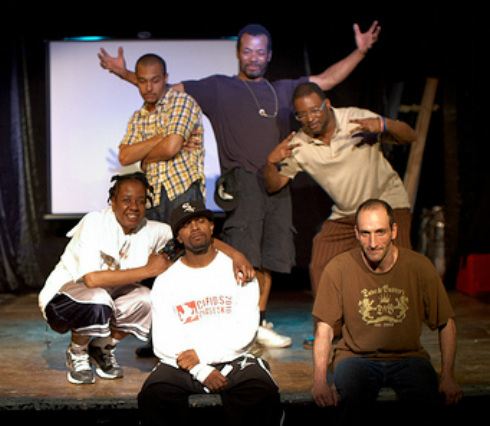Theater of the Oppressed
|
Started in the 1980’s by Augusto Boal in Brazil, Theater of the Oppressed is now a worldwide movement that empowers communities to understand and respond to challenging social, economic, and political conditions through the catalyst of theater. The model of Theater of the Oppressed is, broadly, to engage local people in the process of creating and then performing a theater piece. But instead of simply performing this piece for an audience, there are fundamentally interactive components included as well, designed to empower all participants to ask deep questions and work towards answers in their own lives. For instance, a common method of audience engagement, and one that I saw when I participated in a TO workshop in New York City in 2010, goes like this: members of the troupe perform a scene involving a difficult interaction with an authority figure. (I saw NYC TO’s “Hellter Skelter,” a show about the many challenges homeless people face in dealing with the shelter system in NYC.) In the scene, a shelter client is being treated with little respect, and being paid little attention, by a desk worker at a shelter—the employee’s not even willing to interrupt a cell phone conversation with a friend to help the client out. The employee’s intransigence and dismissive attitude might mean that the homeless person won’t be able to stay at the shelter that night, a very real consequence for the client but potentially not that big of a deal to the desk worker. The actors played out this scene as they’d actually experienced it, and then, having done it once through, asked if any members of the audience would like to come up on stage and see if they could’ve dealt differently with the shelter employee to produce a better outcome. Questions naturally arise from this process: Why is the employee so angry and gruff in the first place? What’s the best way to deal with an unreasonable or irresponsible person who holds authority over you? What kinds of conflict resolution tools can be brought to bear in a circumstance like this? Is it better to fight back or to try to diffuse a situation? “Acting” out the answers to these questions brings an incredible reality to the process and fosters rich discussions among the audience (as well as among the actors). This is only one of many examples of the sorts of interesting, powerful, and meaningful engagements that the Theater of the Oppressed makes possible for their audiences. Further reading and events: Theater of the Oppressed NYC |


